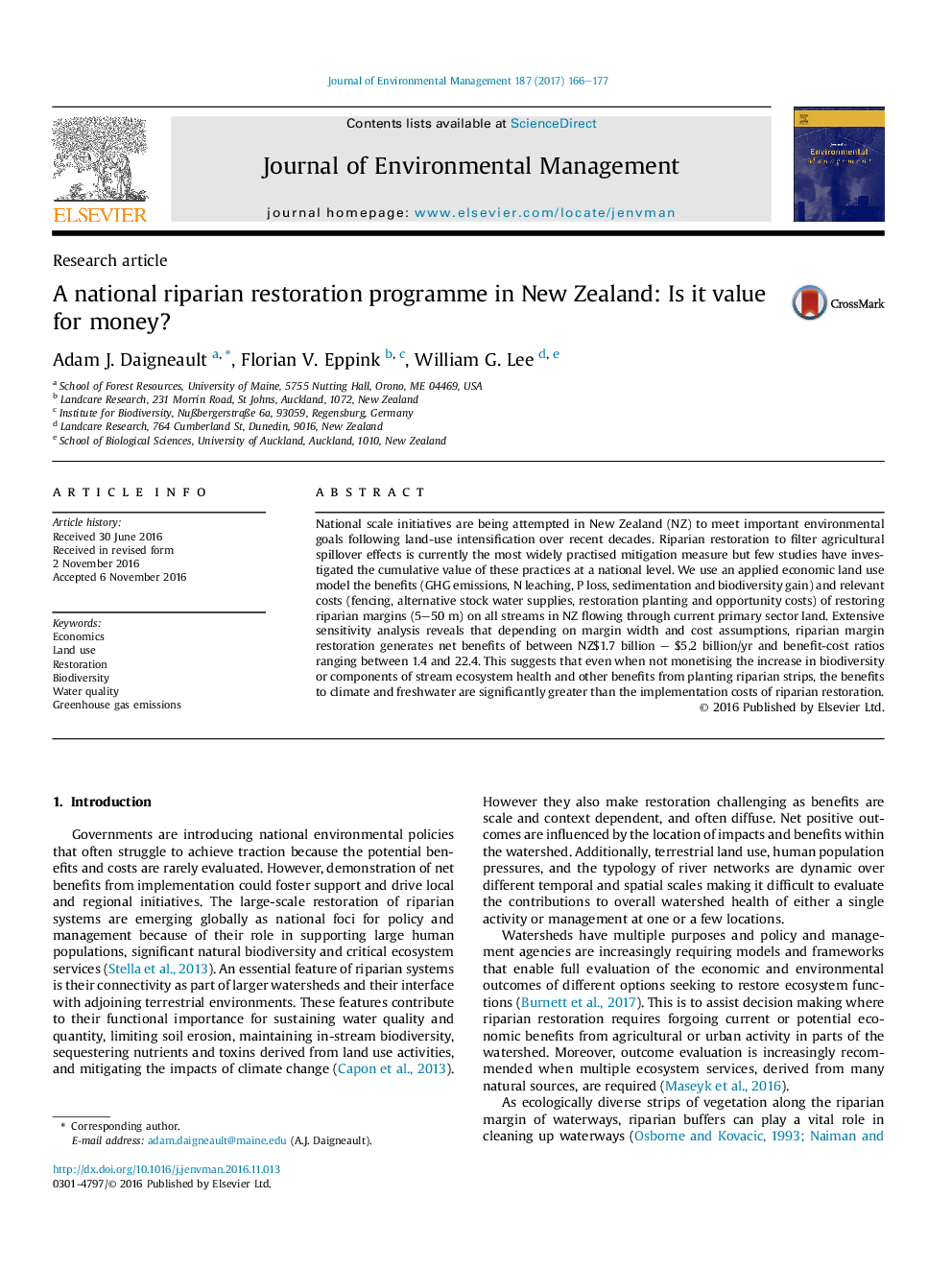| Article ID | Journal | Published Year | Pages | File Type |
|---|---|---|---|---|
| 5117366 | Journal of Environmental Management | 2017 | 12 Pages |
Abstract
National scale initiatives are being attempted in New Zealand (NZ) to meet important environmental goals following land-use intensification over recent decades. Riparian restoration to filter agricultural spillover effects is currently the most widely practised mitigation measure but few studies have investigated the cumulative value of these practices at a national level. We use an applied economic land use model the benefits (GHG emissions, N leaching, P loss, sedimentation and biodiversity gain) and relevant costs (fencing, alternative stock water supplies, restoration planting and opportunity costs) of restoring riparian margins (5-50Â m) on all streams in NZ flowing through current primary sector land. Extensive sensitivity analysis reveals that depending on margin width and cost assumptions, riparian margin restoration generates net benefits of between NZ$1.7 billion - $5.2 billion/yr and benefit-cost ratios ranging between 1.4 and 22.4. This suggests that even when not monetising the increase in biodiversity or components of stream ecosystem health and other benefits from planting riparian strips, the benefits to climate and freshwater are significantly greater than the implementation costs of riparian restoration.
Related Topics
Physical Sciences and Engineering
Energy
Renewable Energy, Sustainability and the Environment
Authors
Adam J. Daigneault, Florian V. Eppink, William G. Lee,
